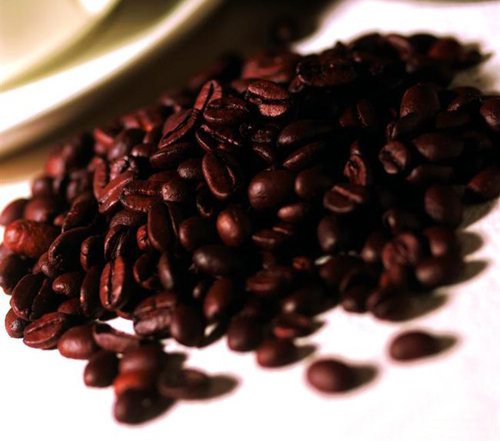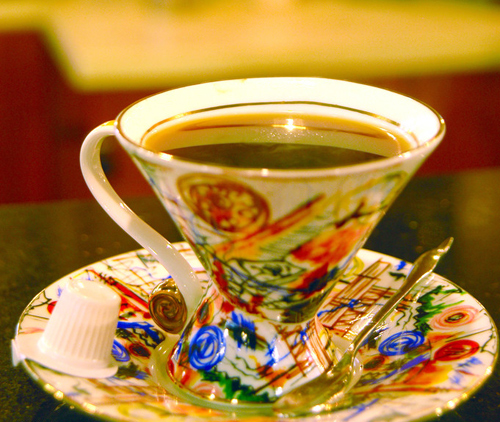What is charcoal coffee? How do you make charcoal coffee?
What is charcoal coffee? As one of the three largest drinks in the world, coffee is very diverse, such as Blue Mountain, Mantenin, Mocha, Cappuccino, Latte and so on. The following is to introduce the charcoal-roasted coffee in the coffee family, and let's learn what charcoal-fired coffee is and how to make it.

What is charcoal coffee?
Charcoal roasted coffee is a kind of single coffee divided in Japan, which is almost sour in taste, with strong bitterness and sweet alcohol, and has a strong taste. Authentic charcoal roasted coffee is usually deeply roasted with carbon fire. The charcoal roasted coffee beans are dark in color, mellow in taste and not sour in taste.
Japanese charcoal-roasted coffee is called "the bitterest coffee in the world". It uses a deep roasting process to adjust the bitterness of the coffee to the limit, so that the charcoal-roasted coffee tastes bitter but not astringent, strong but independent of other coffees.

How do you make charcoal coffee?
If you want to make your own cup of charcoal-fired coffee, it is best to grind the right amount of charcoal-fired coffee beans into powder before drinking it. Although it is troublesome, you can enjoy a cup of fragrant and ground coffee in the process of brewing coffee. The amount of coffee powder can be determined according to personal preferences, usually about 8-10 grams. If you want a stronger flavor of coffee, you can increase it to 15 grams. The temperature of the water is very important for mixing a cup of coffee. The ideal water temperature is 86 ℃. In this way, you can make a cup of delicious coffee.
Specific methods:
1. Add 250ml of water to the pot and bring it to a boil.
2. Pour 50ml boiled water into the coffee cup to warm the cup.
3. Pour the coffee powder into the pot and stir it clockwise for two or three times.
4. After stirring, continue to cook for about 60 seconds and then turn off the heat
5. Pour out the water from the warm coffee cup, put the filter cloth on the cup, and slowly pour into the brewed coffee.
Tips:
1. The central position of the filter cloth should be slightly lower so that the coffee liquid will not be spilled when you pour the coffee.
2. Clean the filter cloth as soon as possible after using it, so as to avoid the color and taste of coffee when you use it next time.
Important Notice :
前街咖啡 FrontStreet Coffee has moved to new addredd:
FrontStreet Coffee Address: 315,Donghua East Road,GuangZhou
Tel:020 38364473
- Prev

What is Italian coffee? What kind of Italian coffee do you have?
What is Italian coffee? Coffee is one of the three major drinks in the world, and there are many kinds of coffee. According to the differences of countries and regions, there are Jamaican coffee, Cuban coffee, Brazilian coffee, Mantenin coffee, Irish coffee, Italian coffee, Colombian coffee and so on. Italian coffee is famous for its strong taste and aroma. Next, the editor will show you
- Next

Can I drink coffee overnight? How much coffee should I drink every day?
Can I drink coffee overnight? Coffee is one of the three major drinks in the world. Everyone knows that coffee is ready to drink, but if you brew too much in the evening and can't finish it, can you heat it up until the next day? Can I drink coffee overnight? Can I have coffee overnight? Now, the editor will answer the question about whether you can drink overnight coffee. Can I drink coffee overnight? For overnight coffee
Related
- Beginners will see the "Coffee pull flower" guide!
- What is the difference between ice blog purified milk and ordinary milk coffee?
- Why is the Philippines the largest producer of crops in Liberia?
- For coffee extraction, should the fine powder be retained?
- How does extracted espresso fill pressed powder? How much strength does it take to press the powder?
- How to make jasmine cold extract coffee? Is the jasmine + latte good?
- Will this little toy really make the coffee taste better? How does Lily Drip affect coffee extraction?
- Will the action of slapping the filter cup also affect coffee extraction?
- What's the difference between powder-to-water ratio and powder-to-liquid ratio?
- What is the Ethiopian local species? What does it have to do with Heirloom native species?

